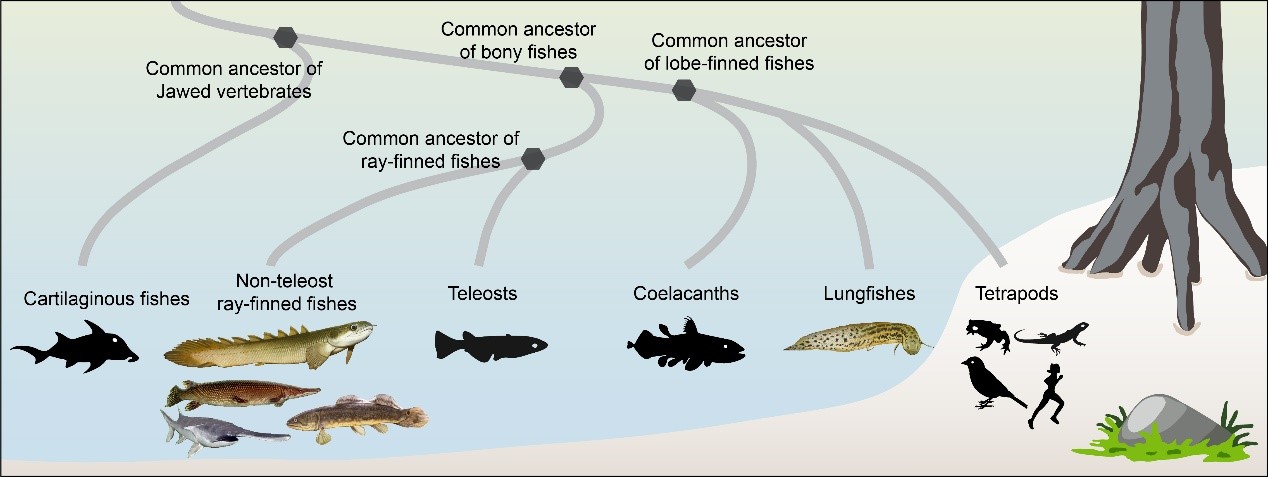A research team led by Kunming Institute of Zoology of Chinese Academy of Sciences in collaboration with other domestic and overseas research institutes has unraveled the mystery of water-to-land transition of vertebrates by investigating the genomes of African lungfish, bichir, paddlefish, bowfin and alligator gar, said Prof.WANG Wen. These findings were online published in two research papers in Cell on 5th February.
The water-to-land transition is a leap in the history of vertebrate evolution and one of the most important scientific issues in vertebrate evolution. Previous studies have shown that vertebrate landing occurred in bony fishes.
The five species analyzed by the researchers belong to the two major groups (lobe- and ray-finned fishes) of extant bony fishes. Lungfishes are the closest extant relatives of tetrapods and harbor the largest genome sizes (40Gb), which is more than 10 times the size of human genome.
The researchers found that the functional elements related to limb flexibility might have originate from cartilaginous fishes, and were conserved in lobe- and ray-finned bony fishes but were completely lost in the teleosts. Primitive lungs might also have originated from the common ancestor of bony fishes although and then lungs were replaced by the swim bladder in most ray-finned fishes.
Adding lungfish into the analysis, the researchers proposed that the evolution of water-to-land transition of vertebrates might have taken place in three crucial steps of genetic innovation.
The first step was that the common ancestors of bony fishes already had an initial air-breathing ability and relative molecular basis. The second step was an increase in air breathing capacity through the appearance of more respiratory-related genes and functional elements of sarcopterygians. The third step might have resulted from further genetic innovations like more genes and functional elements, providing the last critical basis for the water-to-land transition.
The functions related to limb movement also gradually evolved. The humerus is a proximal basal element of the sarcopterygian forelimb, which evolved from the metapterygium in basal ray-finned fish, the radius might have originate from the ancestors of lungfish and tetrapods, and the pentadactyl limb eventually appeared in tetrapods.
In addition, the water-to-land transition also accompanied with the co-evolution of circulatory system, brain, and locomotion system.
The research results are of milestone significance for understanding the evolution mechanism and process of vertebrates from water to land.
These findings, entitled “African lungfish genome sheds light on the vertebrate water-to-land transition” and “Tracing the genetic footprints of vertebrate landing in non-teleost ray-finned fishes”, were published in Cell on 5th February,2021. Web link: https://www.cell.com/cell/fulltext/S0092-8674(21)00090-8, https://www.cell.com/cell/fulltext/S0092-8674(21)00089-1).
Dr. WANG Wen and Dr. ZHANG Guojie are the two lead contact authors. This project was financially supported by grants from Strategic Priority Research Program of the Chinese Academy of Sciences ( XDB13000000 ).

The evolution of vertebrates from water to land
(Image by WANG et al.)
(By WANG Wen, Editor: YANG Yingrun)
Contact:
YANG Yingrun
yangyingrun@mail.kiz.ac.cn
